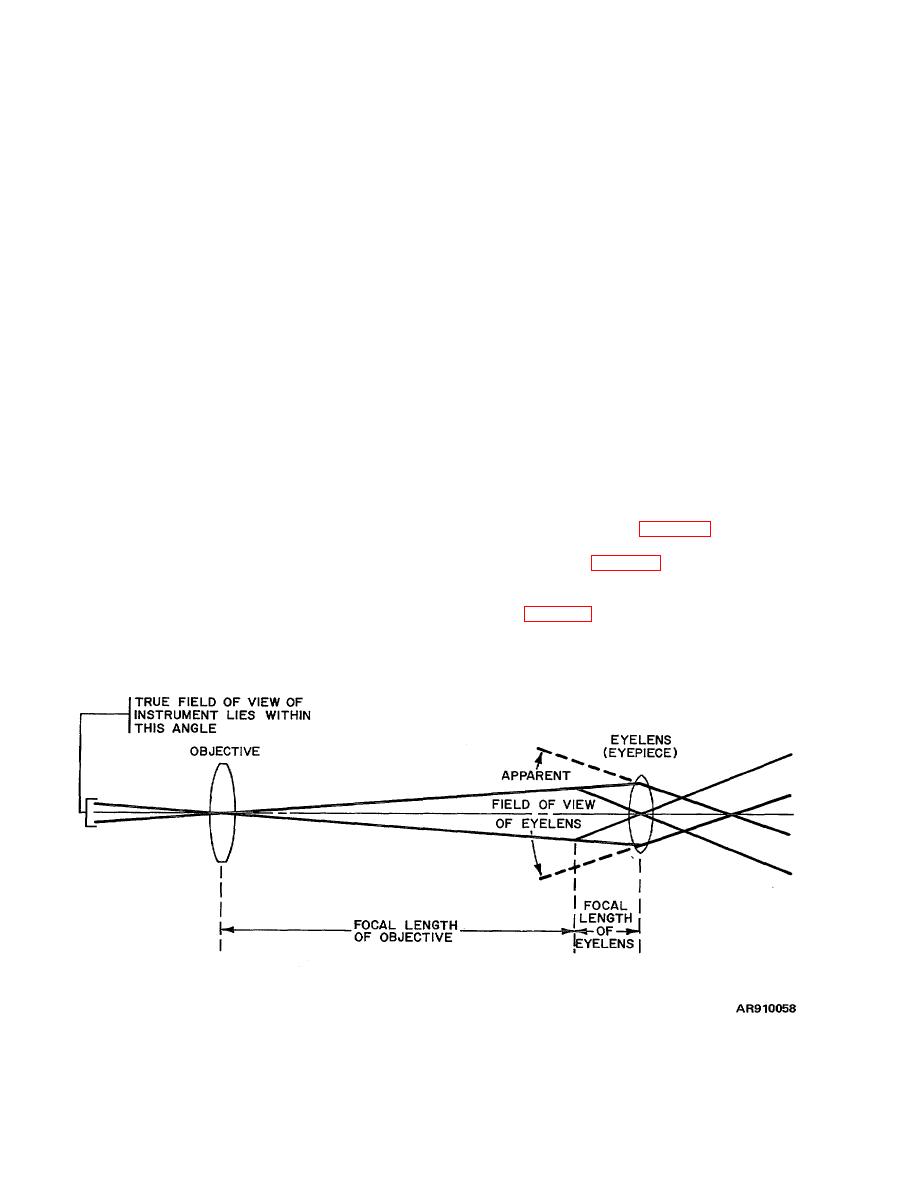 |
|||
|
|
|||
|
Page Title:
Section VI. CHARACTERISTICS OF OPTICAL SYSTEMS |
|
||
| ||||||||||
|
|
 TM 9-258
reflection.
2-28. Selective Reflection and Absorption.
b. An object appears to be of a color because it
a. Objects derive their color from the selective
absorbs light of certain wavelengths and reflects others
reflection and selective absorption of light. If an object
striking it. In sunlight, it may appear to be of one color
reflects practically all of the light striking it, the object
because it reflects the light of that color and absorbs all
appears white. If it absorbs the greatest percentage of
others. Under a single color or monochromatic light, it
light, it appears black. The surfaces of most objects
might appear to be of another color or almost black,
absorb light of certain frequencies and reflect light of
depending upon what colors and how much light it
other frequencies. The colors of these surfaces are
reflected.
determined by the frequencies they reflect. This is
known as selective
Section VI. CHARACTERISTICS OF OPTICAL SYSTEMS
eyepiece magnifies the image formed by the objective, it
2-29. General.
Military fire-control instruments
cannot supply sharpness or detail lacking in the image.
employing optical systems are required for a great
The shorter the focus of the eyepiece, the greater is the
variety of purposes. To cite a few, these instruments are
magnifying power.
used to see at great distances, to magnify small objects,
to determine positions, to gage distance, and to aim
2-32. Field of View.
weapons.
a. The true field of view of any optical instrument is
the extent (the width and height) of what can be seen at
2-30. Military Telescopes. Necessary characteristics
one time by looking through the instrument. The field of
of military optical instruments are usually the following a
view is cone-shaped; it becomes wider and higher as the
minimum of weight and bulk, the largest possible field of
distance is increased from the objective. In the majority
view and brightness of image consistent with the
of fire-control instruments the angle of the true field of
necessary magnifying power; freedom from distortion;
view is relatively small (para 5-25).
and a combination of ruggedness with simplicity. The
b. The true field is limited by the optical possibilities
instrument must form a normal erect image of the object.
of the eyepiece(fig. 2-52). The maximum angle which
In the majority of instruments, the optical system must
might be imaged by the eyepiece, if it were not for a
include a reticle pattern.
number of limiting factors, is termed the apparent field of
2-31. Magnification. Magnification of a telescope
optical system depends both upon the objective and the
eyelens or eyepiece. Although the
Figure 2-52. Field of view limited by optical possibilities of eyepiece.
2-39
|
|
Privacy Statement - Press Release - Copyright Information. - Contact Us |